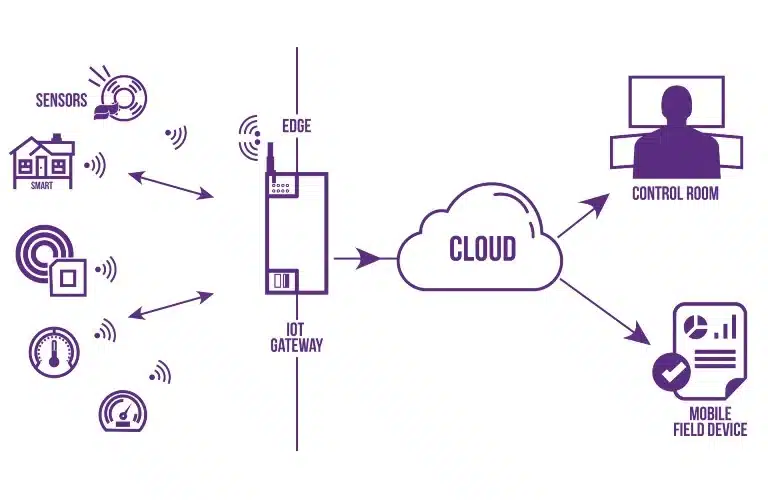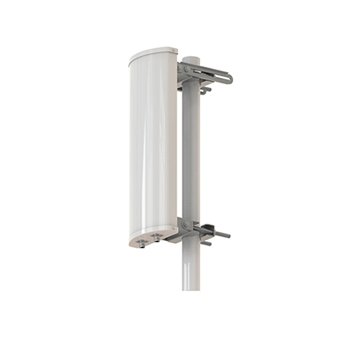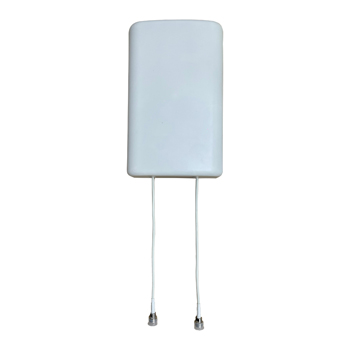In this article, we will discuss 5 popular LoRaWAN gateways available in the market. With the increase in the Internet of Things (IoT) market size, scalability is a crucial factor in realizing more robust and efficient IoT applications. LoRa and LoRaWAN are wireless communication protocols that are well-established a popular among IoT designers. The main component which limits the scalability of a LoRaWAN network is the gateway which is responsible for handling different end devices and their connection to the network server. Therefore, in this article, we will identify 5 popular LoRaWAN gateways by different manufacturers which address different environments and use cases.
Table of Contents
ToggleWhat are LoRa and LoRaWAN gateways?
As the IoT expands, scalability is a key factor that needs to be considered when designing new IoT applications. To achieve scalability, it is necessary to embed the flexibility of interfacing new and different end devices to the central IoT network. A gateway is the major component in an IoT network to achieve the scalability of the network.

LoRa radio modulation is a popular communication protocol used in LoRaWAN networks in IoT applications. LoRa and LoRaWAN gateways are the gateways deployed in largescale IoT networks which rely on LoRaWAN network stack. These gateways can handle LoRa radio modulation schemes to communicate with LoRa-based end devices. The main functionality of the LoRaWAN gateway is to establish the connection between end devices and the central node or cloud server via the Internet. They can operate in two different modes:
- Gateway mode: In this mode data from the end device is passed through the internet to the central node or the network server
- Device mode: In this mode, data is transferred only between the end device and the gateway
Popular brand gateways in the market
Now let us investigate some popular market available LoRaWAN gateways.
RAK7243C Pilot Gateway
This is a prototype LoRaWAN gateway that is based on Raspberry Pi 3B+ microcomputer. It is mostly suitable for beginners who are beginning to develop scalable IoT applications. The gateway is designed as a module that is composed of the Raspberry Pi 3B+ microcomputer and RAK2245 Pi Hat. Additionally, it consists of a GPS module and an additional RAK2013 Cellular Pi Hat, enabling cellular communication. If you are a beginner who is hoping to develop and design large-scale IoT applications, RAK7243C Pilot Gateway is a great start. You can find a beginner-friendly setup guide here https://www.thethingsnetwork.org/docs/gateways/rak7243c/ , where the network is developed on top of The Things Network®.
Let us briefly discuss some of the features of RAK7243C Pilot Gateways. This is a pre-assembled LoRaWAN gateway that is targeted at developing prototypes and proof-of-concept evaluation. It has a SX1301 baseband processor which is capable of emulating 49 different LoRa demodulators and capable of handling all different 8 LoRaWAN channels (SF7 – SF12) and 1 downlink channel. RAK7243 is only capable of handling Class A and Class C end devices.
RAK7243C supports Full LoRa Global band support which includes: 433 MHz, 470 MHz, 865 MHz, 868 MHz, 915 MHz, 920 MHz, and 923 MHz. In addition, the LoRaWAN capability RAK7243C supports NB-IoT/LTE versions with the help of the additional cellular Pi Hat. You can find the vendor’s site on https://store.rakwireless.com/products/rak7243c-pilot-gateway?variant=39942876102854 .
MultiTech Conduit
MultiTech Conduit is a product of The Conduit® which claims to be the industry’s most scalable and configurable LoRaWAN gateway, which is especially designed for Industrial IoT applications. This can provide network server connection via 4G-LTE, 3G and Ethernet. Unlike RAK7243C, this is an industrial scale gateway especially designed for Industrial applications. The connection of different wireless and wired interfaces is realized by means of two MultiConnect mCard®. MultiConnect mCards are wireless and wired connection interfaces that can be easily connected to the MultiTech Conduit.
Moreover, MultiTech Conduit allows managers and technicians to overlook devices connected to the gateway and their performance through DeviceHQ® which is claimed as the world’s first IoT Application Store and Device Management platform. This gives more control and authority over the gateway especially in the context of Industrial IoT applications. Also, the gateway is equipped with mPower™Edge Intelligence firmware which provides additional programmability and flexibility for the gateway. In conclusion, MultiTech Conduit can be seen as an ideal candidate for Industrial IoT applications, and more information can be accessed via https://www.multitech.com/brands/multiconnect-conduit .
What can Tesswave do for you?
Tesswave provide 100+ antenna products and you can contact us for antenna customized solutions, get in touch with us today to get a Free quote.
Get an Instant Quote
Get a FREE quote and we will contact you within an hour
Everynet Network Gateway
Everynet Network Gateway is another LoRaWAN gateway developed by a giant LPWAN (Low Power WAN) network provider Everynet®. The main interesting feature of the Everynet Network Gateway is its compact size which makes it easy to mount and install. As additional features, this is equipped with GPS and 3G antennas. It has a range of > 15 km online-of-Sight and > 2km in noisy urban environments. By default, network and traffic management are handled by Everynet Core Network Platform. This is an ideal candidate for an outdoor gateway. You can find more information at http://www.alltek.sg/wp-content/uploads/2018/11/everynet-Gateway-V2.1-Product-Brief.pdf
Kerlink Wirenet iFemtoCell
Having introduced an outdoor gateway, it would be worthwhile looking at indoor LoRaWAN gateways. Kerlink Wirenet iFemtoCell by Kerlink Communications® is a popular indoor LoRaWAN gateway. It composes of two main versions:
- Wirenet iFemtoCell
- Wirenet iFemtoCell-evolution
The main difference between the type of versions lies in the type of backhaul connection which connects the gateway to the network server.
Kerlink Wirenet iFemtoCell is capable of serving the ideal LoRaWAN indoor gateway range, which is crucial to support your smart building, smart city, and other indoor IoT applications. It also guarantees deep coverage and excellent operational capability for dense indoor LoRaWAN applications. Remote monitoring and management capability is provided by Kerlink network operations solutions, the Wanesy Management Center, which has an interesting feature of establishing standalone and self-operating LoRaWAN private networks. It has 8 uplink channels and 1 downlink channel, and the backhaul connection is wired-based (Ethernet). More info at https://www.kerlink.com/product/wirnet-ifemtocell/ .
The Things Gateway
This is a popular LoRaWAN gateway that is cost-friendly, easy to set up web-based setup and modular in design. The connection and setup process of Things Gateway is easy and can connect different sensors and embedded computers with an easy connection process in under 5 minutes. The manufacturer claims the gateway can accommodate thousands of nodes. However, the device operates only at 868 MHz for use in the EU and 915 MHz for use in the United States.
One of the greatest advantages of the Things Gateway is that it is built on top of the Things Network which is a popular LPWAN network solutions provider globally. Moreover, there are two Things Gateways as
- The Things Indoor Gateway
- The Things Outdoor Gateway
These are designed for different use cases and applications depending on the environment’s context. More information and setup procedures can found here. https://www.thethingsnetwork.org/docs/gateways/gateway/ .
Conclusion
In this short article, we explored some of the popular market available LoRaWAN gateways. The choice of the correct gateway depends on the user application and the requirements of the designer. It also equally depends on the type of environment in which the gateway will be deployed and the context of the network.








